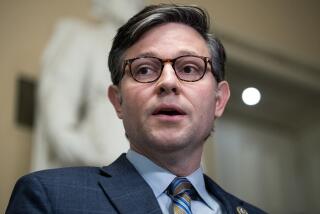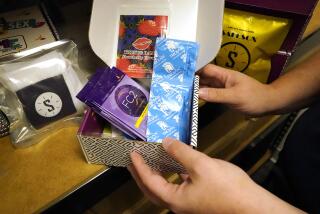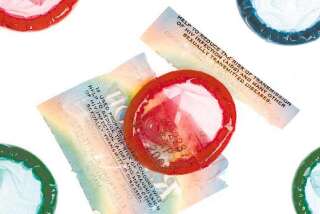It’s All About Teaching Kids to Protect and Honor Their Bodies
- Share via
It was certainly one of the more unusual trade show exhibits I have ever seen.
Arrayed atop the tables were bowls of free condoms and a rack of colorful plastic creations billed as the ultimate in “safe sex” devices.
The salesman thrust one toward the line of conference-goers streaming by, drawing puzzled looks from a matronly public health nurse.
“Try it,” he urged, holding forth on what he called, “the satisfying alternative for solo sex.”
The woman studied it for a moment, then shook her head and moved on.
“I have a hard enough time getting the kids to stop giggling when I talk about condoms,” she said, moving toward a table piled with safe-sex brochures. “Can you imagine what they’d do if I handed them that . . . that . . . thing.”
*
The front in the fight against unwanted pregnancy and sexually transmitted disease is an interesting place these days.
Although new AIDS cases declined by 6% in the country last year, rates are still rising among women and the young. While teen pregnancy is dropping nationwide, more teens are catching sexually transmitted diseases than ever before.
And despite years of high-profile efforts to tout condoms as the best way to protect against pregnancy, less than 50% of the young people who are having sex use condoms.
Against that backdrop, hundreds of public health workers from around the country converged on the Hollywood Roosevelt Hotel last week for the second annual “National Symposium on Overcoming Barriers to Condom Use.”
The two-day conference featured expert research on subjects such as “Efficacy, Slippage and Breakage for Male Latex and Plastic Condoms” and “Condom Use Among Recent Immigrants”; a cocktail party at a local “Condomania” shop; a contest for posters promoting condom use; and an unusual set of door prizes, including caps reading “Trojan” and T-shirts graphically declaring “No Glove, No Love.”
My personal favorite was the shirt by the Montana Gay Men’s Task Force, sporting a photo of a buff, bare-chested fellow in a cowboy hat, and phrase “Put a condom on your cowboy!” Cute, but I sure couldn’t wear it to a PTA meeting.
*
There’s something about condoms that makes kids titter and parents nervous. And yet, those are the groups that health educators are most desperate to reach with a message that goes beyond issues of technique and access and sexual mores.
“It’s not about teaching kids how to put them on,” explained Anthony Marek, coordinator of Project Action, a San Jose program to help prevent teen pregnancy and HIV infection.
“We’re trying to teach them that it’s about respecting themselves and their bodies, and their partners, and we’re going against tremendous cultural pressure . . . that treats sex as just something you do, like recreation.”
You can hand a kid a condom and can teach him how to use it, but unless you empower both girls and boys to set their own boundaries--and require others to honor them--then efforts to promote condom use will fail, Marek said.
“We tell them it’s important to go slow in a relationship . . . and that there’s nothing wrong with saying ‘No. This is something I will not do.’ ”
*
Steve Shubin shares Marek’s frustration, but he’s got another solution in mind. His “Fleshlight”--that aforementioned plastic device billed as “alternative sex for males.”
An ex-cop and father of seven, he invented it when his wife was in the midst of a difficult pregnancy and couldn’t have sex for months.
He’s sold 11,000 since introducing it last fall, mostly through catalogs and adult novelty shops. Now he’s trying to crack the “legitimate” market, calling it a boon for AIDS sufferers, prisoners, traveling salesmen, hormonally charged teenage boys . . . .
“Everybody’s trying to teach our daughters to say ‘no,’ but nobody’s teaching our sons to take care of their own needs. With this, you don’t need a condom.
“You don’t even need a partner.”
*
* Sandy Banks’ column is published Mondays and Fridays. Her e-mail address is sandy.banks@latimes.com.
More to Read
Sign up for Essential California
The most important California stories and recommendations in your inbox every morning.
You may occasionally receive promotional content from the Los Angeles Times.












